← Back to Module 12
ITS ePrimer Presentation
Module 12: Institutional Issues
(Note: The following PowerPoint presentation is a supplement to the module.)
Slide 1: ITS ePrimer Module 12: Institutional Issues

July 2013
Intelligent Transportation Systems Joint Program Office Research and Innovative Technology Administration, USDOT
Author Notes for Slide 1:
This is the first, title slide in all modules.
The following slides are in this order:
- Instructor information
- Learning Objectives
- Content-related slide(s)
- Summary (what we have learned)
- References
- Questions?
This module is sponsored by the U.S. Department of Transportation’s ITS Professional Capacity Building (PCB) Program. The ITS PCB Program is part of the Research and Innovative Technology Administration’s ITS Joint Program Office.
Thank you for participating and we hope you find this module helpful.
Slide 2: Instructor

Jennifer Rephlo
Transportation Engineer
SAIC
Reston, VA, USA
Author Notes for Slide 2:
Jennifer Rephlo is a transportation engineer with SAIC. She has 11 years of experience supporting the USDOT’s ITS Joint Program Office with a variety of studies and outreach efforts.
Slide 3: Learning Objectives
- Gain an understanding of the kinds of institutional challenges that agencies can encounter in planning, deploying, and maintaining ITS technologies.
- Gain an understanding of successful methods that can be used to address these challenges.
- Provide information on valuable resources that can be helpful in addressing these institutional challenges.
Author Notes for Slide 3:
The objectives of this module are for the reader to gain an understanding of the kinds of institutional challenges agencies can encounter in planning, deploying, and maintaining ITS, and for the reader to gain an understanding of some methods and strategies that can be used to address these challenges, as well as to learn where to turn to for more information.
Slide 4: Introduction
- Institutional challenges have plagued ITS projects since their advent
- Numerous papers and reports document lessons learned from ITS projects that encountered institutional issues over the past two decades.
- Though agencies will still encounter new challenges, much can be learned from previous experiences.
- This module presents institutional issues commonly encountered in deploying and maintaining ITS, provides examples of how agencies have successfully overcome these challenges, and provides resources where the readers can find additional information on this topic.
Author Notes for Slide 4:
Institutional challenges can be more complex than technical challenges at times. Although new challenges will continue to arise in future deployments, much can be learned from the past experiences of others. This module highlights some of these previous experiences.
Slide 5: Introduction (cont'd)
- The remainder of this module is organized as follows:
- Making the Business Case for ITS
- Organizational Capabilities for ITS
- Funding/Financing ITS
- Data Privacy Issues
- Standards and Open Source
- Operating and Maintaining ITS
- Inter-jurisdictional Cooperation
- Workforce Issues
Slide 6: Making the Business Case for ITS Incorporate ITS into the Planning Stage
If ITS projects are not represented in the planning process, they may not make it to the deployment and/or operating phases
- Metropolitan Planning Organizations (MPOs) and other planning organizations play a key role in relaying the need for ITS investments
Key Resource:
USDOT’s “Planning for Operations” Focus Area https://ops.fhwa.dot.gov/plan4ops/index.htm

Source: FHWA Planning for Operations
Author Notes for Slide 6:
The first section of this module focuses on “Making the Business Case for ITS.” Essentially it can be difficult politically to choose technology over pavement, bridges, and potholes. This section of the module discusses how agencies can work to mainstream ITS within their agencies and state.
One way to do this is to incorporate ITS into the planning stage. If ITS projects aren't represented in the planning process, they may never have a chance for deployment. As a result, MPOs and other planning organizations play a key role in relaying the need for ITS investments.
USDOT’s “Planning for Operations” Focus Area is a good resource for how to incorporate M&O strategies into the planning process. The Planning for Operations initiative is a joint effort between the FHWA Office of Operations and the FHWA and FTA Offices of Planning. Linking planning and operations is vital to improving transportation decision-making and the overall effectiveness of transportation systems.
Slide 7: Making the Business Case for ITS Link ITS to Current Issues
Easier to get ITS on the agenda if it is linked to current issues
- ITS can solve a multitude of problems given the appropriate application of technologies
- What issues are important in your state or region?
- Emergency preparedness, job growth, congestion mitigation…?
Real-World Example: FDOT linked ITS to hurricane preparedness in developing an integrated statewide operations system for traffic monitoring, incident data capture, weather information, and traveler information.
Author Notes for Slide 7:
Another effective strategy is to link ITS to current issues in your region. It’s easier to get ITS on the agenda if it’s linked to current issues, such as emergency preparedness, job growth, or congestion mitigation. ITS can solve a multitude of problems given the appropriate application of technologies.
For example, the Florida Department of Transportation (FDOT) successfully linked ITS strategy to hurricane preparedness in developing an integrated statewide operations system for traffic monitoring, incident data capture, weather information, and traveler information in the Florida project.
The USDOT’s ITS Knowledge Resources Web site provides information on specific projects and benefits that have resulted from these projects, allowing a user to identify ITS strategies appropriate for their agency or region’s needs.
Slide 8: Making the Business Case for ITS Educate Policy Makers
- Many public officials and staff members responsible for transportation plans and programs are not well versed in ITS technologies
- Establish a coalition or group solely focused on transportation issues to get ITS in front of decision-makers
Educate the Public
- The public drives governmental priorities and many of the important “back-office” technologies are not apparent to the public, making them a tough sell with politicians
- Message ITS concepts and benefits to the general public
Author Notes for Slide 8:
In some instances, institutional issues can arise in the planning process as a result of not having adequate representation in policy discussions and/or not being fully understood by policy makers. Some public officials and staff members responsible for transportation plans and programs are still only vaguely familiar with ITS technologies, and many of the important “back-office” technologies are not apparent to the public, making them a tougher sell with politicians whose constituents are not requesting the technologies. Some public officials associate the term ITS with fully automated guideways and vehicles, leading them to conclude that these technologies are too far in the future to be worth consideration for near-term plans.
One strategy that can be quite effective at educating policy makers is to establish a coalition or group solely focused on transportation issues. One example of this is the Central Maryland Transportation Alliance, which is a coalition of Baltimore area business, civic, and nonprofit groups intent on improving travel within Central Maryland, consisting of Baltimore City as well as five surrounding counties. Establishment of a group such as this provides a mechanism for explaining the need for specific transportation investments and technologies in advance of seeking funds.
Educating the public can also help immensely since funding for ITS is very much driven by the transportation consumer, in that people set “governmental priorities” and if they place value in ITS technology and services, the funding will come. ITS concepts and benefits should be topics of messaging to the general public who may not be aware of the many challenges faced by the transportation system. Educating the public can include conducting pre-project education for a specific project and providing ongoing public education on ITS.
Slide 9: Making the Business Case for ITS Educate Decision-Makers
- Some agency staff do not know where to turn for information on benefits and costs of ITS
- Respondents to a 2006 UC Berkeley study reported that lack of information on the benefits/costs of ITS was hindering them in fitting ITS projects into mainstream transportation planning processes
- USDOT resources:
- ITS Knowledge Resources Web site
- Operations Benefit/Cost Analysis Desk Reference
- ITS Benefits, Costs, Deployment, and Lessons Learned Desk Reference
Author Notes for Slide 9:
Educating decision-makers is also important. In many cases, agencies simply need better and more current information on the benefits and costs of ITS. In a 2006 UC Berkeley study exploring the factors that prevent ITS from being a “mainstream” transportation planning activity, survey respondents reported that lack of information on the benefits and costs of ITS was hindering them in fitting ITS projects into mainstream transportation planning processes. Some agencies still do not know where to turn for information.
There are a number of federal resources that agencies can turn to for information including:
- The USDOT’s ITS Knowledge Resources Web site
- The USDOT’s ITS Benefits, Costs, Deployment, and Lessons Learned Desk Reference
- The USDOT’s Operations Benefit/Cost Analysis Desk Reference
Slide 10: Organizational Capabilities for ITS
- Many DOTs and transit agencies have a deeply ingrained engineering culture well suited for managing construction and infrastructure maintenance projects
- Not well suited for ITS projects
- Many agencies are finding the need to adjust their culture
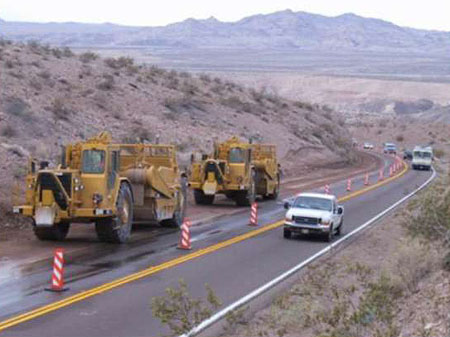
Source: SAIC
“Transportation agencies have a long tradition, engineering culture, and well developed program for capacity construction and maintenance that is not altogether supportive of SO&M. In some cases, the legacy culture must be adjusted in terms of agency mission, new technical knowledge, processes, organizational capacity, and relationships.”
- AASHTO Guide on SO&M
Author Notes for Slide 10:
Many state departments of transportation as well as many transit agencies have a deeply ingrained engineering culture that is well suited for managing construction and infrastructure maintenance projects. This culture, however, is not particularly well suited for ITS projects.
As a result, many agencies are currently experiencing an adjustment period to accommodate the evolving industry and the new technical skills the industry requires.
AASHTO recently undertook an effort to address this head-on, creating a resource for the industry (the AASHTO Guide on Systems Operations and Management (SO&M)) on how to successfully adjust their culture in terms of agency mission, new technical knowledge, organizational capacity, and relationships.
Slide 11: Organizational Capabilities for ITS
- AASHTO Guide on SO&M
- Helps agencies understand how to adjust their culture in terms of agency mission, new technical knowledge, organizational capacity, and relationships
- Helps agencies evaluate capabilities in key areas of process and institutional arrangements, and prepare a formal action plan
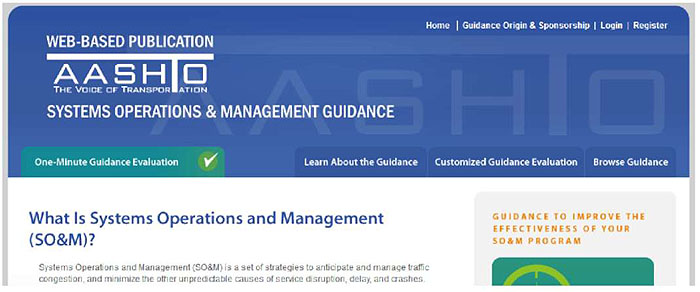
(Extended Text Description: This image is an example screen shot of the AASHTO website. There is a blue banner at the top of the screen shot that is written in white that says “Web-based Publications - AASHTO - The Voice of Transportation.” Under the site title is the sub-title “Systems Operations & Management Guidance” in white. At the bottom of the blue banner are four tabs. The first tab at the lower left corner of the blue banner is a green rectangle. Inside the rectangle is the text “One Minute Guidance Evaluation” with a white check mark inside. The remaining three tabs are blue and run horizontally next to one another. They read from left to right “Learn About the Guidance,” “Customized Guidance Evaluation,” and “Browse Guidance.” Below the blue banner is a white section. Written in blue on the left side of this section is the text “What is Systems Operations and Management (SO&M)?” Underneath the title, in smaller black font is the definition “Systems Operations and Management is a set of strategies to anticipate and manage traffic congestion, and minimize the other unpredictable causes of service disruption, delay and crashes.” To the right of the text is a gray box. Written at the top of the gray box in orange is the text “Guidance to Improve the Effectiveness of your SO&M Program.”)
Source: AASHTO Guide on SO&M
http://aashtosomguidance.org
Author Notes for Slide 11:
The guide helps agencies evaluate their capabilities in key areas of process and institutional arrangements, and to prepare a formal action plan.
Audience Interaction Exercise: Instructor can visit the AASHTO guide and walk participants through some examples.
Slide 12: Organizational Capabilities for ITS
- Considers 6 dimensions critical to effective SO&M:
- Business Processes - Formal scoping, planning, programming, and budgeting
- Systems and Technology - Systems architecture, standards, interoperability, and standardization and documentation
- Performance Measurement - Measures definition, data acquisition, analysis, and utilization
- Culture - Technical understanding, leadership, policy commitment, outreach, and program authority
- Organization and Workforce - Organizational structure, staff capacity, development, and retention
- Collaboration - Relationships with public safety agencies, local governments, MPOs, and the private sector
Author Notes for Slide 12:
The AASHTO guide explores six dimensions critical to effective SO&M.
Slide 13: Funding/Financing ITS
The Challenge
- ITS projects often have a difficult time competing with more traditional transportation system improvements
- A more proactive approach to conveying ITS benefits and costs may be necessary for future ITS deployments to compete for state funds
Author Notes for Slide 13:
ITS projects often have a difficult time competing with more traditional transportation system improvements. As a result, the need for sufficient funds is a practical consideration, and touches all aspects of ITS, including system design and engineering, field demonstration and user testing, data management, ongoing deployments, site management and coordination, and operations and maintenance (O&M). There are various ways in which funding for ITS projects is obtained. The following sections describe potential funding opportunities that exist for ITS projects as well as some of the challenges associated with obtaining funding.
Slide 14: Funding/Financing ITS
Public-Private Partnerships (PPPs)
- Increasing examples where private sector entities construct needed roadway facilities in exchange for the right to collect tolls for X years to recoup investment and generate profits
- Emerging examples of state and local agencies obtaining the data used in their traffic management and traveler information initiatives from private sector enterprises where they might traditionally have installed their own infrastructure

Source: SAIC
Author Notes for Slide 14:
One approach to funding may be to foster coordination between public and private entities in development and implementation of new concepts and technologies. Third parties sometimes have more resources available to refine technological solutions. Working with the private sector also has the potential to promote economic growth.
There are increasing numbers of examples where private sector entities construct needed roadway facilities in exchange for the right to collect tolls for a number of years to recoup their investment and generate profits. There are also emerging examples of state and local agencies obtaining the data used in their traffic management and traveler information initiatives from private sector enterprises where they might traditionally have installed their own infrastructure to gather this information.
Slide 15: Funding/Financing ITS
- Practical constraints to PPPs
- Currently only 23 states and Puerto Rico allow PPPs for transportation projects
- Limits on contracting in some states
- Benefits of PPPs
- Third parties sometimes have more resources available to refine technological solutions
- Working with the private sector has the potential to promote economic growth
- Government fiscal barriers can be circumvented, which can hasten implementation
Author Notes for Slide 15:
There are some practical constraints to PPPs: currently only 23 states and Puerto Rico allow the use of PPPs for transportation projects, and some states do not give their transit and transportation agencies the authority to contract out their services.
But, with that in mind, there are some benefits, including the fact that third parties sometimes have more resources available to refine technological solutions. Working with the private sector also has the potential to promote economic growth. Also, PPPs can help circumvent government fiscal barriers.
Slide 16: Funding/Financing ITS
- Potential risks of PPPs
- Higher costs of capital
- Private partner involved in a PPP may go bankrupt or default on debt
- Many are wary that PPPs will lead to fewer job opportunities for the public sector and loss of public control over the transportation system, especially with long-term projects
- Because private organizations are profit-driven, some feel that they do not have the public’s best interest in mind
Author Notes for Slide 16:
Despite the benefits of public-private partnerships, there are several potential risks that public agencies should take into account when considering a PPP, including possible financial disadvantages.
- Higher costs of capital - because interest on PPP debt is taxable whereas interest on municipal bonds is tax exempt.
- Though not common, there is the risk that the private partner involved in a PPP will go bankrupt or default on debt, leading to the possibility that the public agency will have to temporarily take control of the project or that publicly funded debt will not be repaid.
- Many transportation stakeholders are wary that PPPs will lead to fewer job opportunities for the public sector labor force and result in loss of public control over the transportation system, especially with long-term concession projects.
- Because private organizations are profit-driven, some feel that they do not have the public’s best interest in mind and that they may “skimp on maintenance and repairs to boost profits,” for example.
Slide 17: Funding/Financing ITS
Federal Sources of Funding for ITS Projects
- Various sources of federal aid outlined at USDOT’s Web site, “A Guide To Federal-Aid Programs and Projects”
- Some Sample Federal Grant Programs:
- The FTA grant program - A potential source of capital funds for transit ITS projects.
- The Congestion Mitigation and Air Quality Improvement Program - Provides funds to support surface transportation projects and other related efforts that contribute air quality improvements and provide congestion relief.
- The Surface Transportation Program - Provides funding for projects to preserve and improve the conditions and performance on Federal-aid highways, bridge and tunnel projects on public roads, pedestrian and bicycle infrastructure, and transit capital projects.
Slide 18: Data Privacy Issues
The Challenge
- To be effective, ITS applications need to have the ability to collect, integrate, store, and disseminate data and information on the state of the transportation network
- With the future turning toward connected vehicles, endless possibilities are opened up in terms of data that can be used to plan and operate transportation facilities
- Potentially raises significant privacy concerns around the collection, retention, analysis, use, or disclosure of any personal information collected
- Increased focus on this in the future
Author Notes for Slide 18:
Information is the core component of ITS. To be effective, ITS applications need to have the ability to collect, integrate, store, and disseminate data and information on the state of various aspects of the transportation network. Depending on the application, information could be required about travelers, vehicles, or cargo, potentially raising significant privacy concerns around the collection, retention, analysis, use, or disclosure of any personal information collected.
Increased focus on this in the future—the public will interact with ITS on an increasingly frequent basis, so data privacy will, by necessity, become an area of increased focus for the transportation industry.
Slide 19: Data Privacy Issues
- Examples of technologies that require detailed data:
- Electronic toll collection systems
- Speed cameras and red light running cameras
- Border crossing technologies
- Sophisticated travel time applications and road pricing schemes that charge by distance, location, roadway type
- Many connected vehicle safety applications track vehicle position, speed, and heading so that warnings can be sent to neighboring vehicles if a potential for a conflict exists
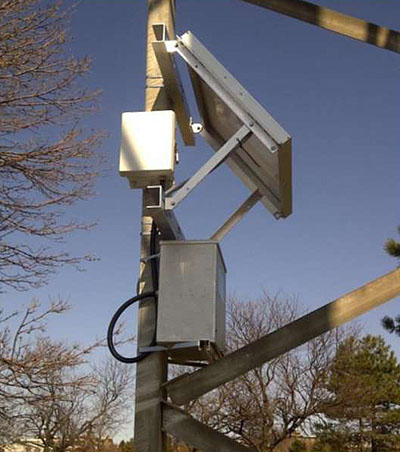
Source: FreeAhead; Robert Tolson
Author Notes for Slide 19:
Advanced transportation systems that involve collection of personal information include electronic toll collection (ETC) systems, speed cameras and red light running cameras, and border crossing technologies, all of which typically identify the vehicle, and, subsequently, the individual to whom the vehicle is registered. Also sophisticated travel time applications and road pricing schemes that charge by the mile, by location, or by roadway type.
Many connected vehicle safety applications track vehicle position, speed, and heading so that warnings can be sent to neighboring vehicles if a potential for a conflict exists—although vehicle/driver data are not required, privacy concerns could still arise due to the detail of the data that are captured.
Slide 20: Data Privacy Issues (3 of 5)
Federal Guidance on Data Privacy
The Federal Privacy Act of 1974 provides a standard definition of personally identifiable information: “Any item, collection, or grouping of information about an individual…that contains his name, or the identifying number, symbol, or other identifying particular assigned to the individual, such as a finger or voice print or a photograph.”
5 U.S.C. § 552(a) (2005).
Slide 21: Data Privacy Issues
Federal Guidance on Data Privacy
- As ITS has evolved into requiring richer data, various Federal programs have explored data privacy
- ITS America developed a document titled “Fair Information and Privacy Principles” (2001)
- Vehicle Infrastructure Integration (VII) Coalition prepared a document laying out a possible framework for privacy policies under that program (2007)
- USDOT’s Policy Road Map for V2V and V2I Safety (2010) specifies certain aspects of handling data privacy
- White House released a “Consumer Privacy Bill of Rights” (2012) with the goal of providing a framework for protecting privacy while promoting innovation
Author Notes for Slide 21:
Over the years, as ITS has evolved into requiring richer data, various Federal programs have explored data privacy. For example…
In 2001, ITS America developed a document titled “Fair Information and Privacy Principles,” in recognition of the importance of upholding individual privacy in implementing ITS technologies. The principles were designed to be advisory in nature, with the goal of educating and guiding transportation professionals, policy makers, companies, organizations, and the public as they develop fair information and privacy guidelines for specific ITS projects.
Vehicle Infrastructure Integration (VII) was a major federal initiative in 2007 and the precursor to the connected vehicle program. The Vehicle Infrastructure Integration (VII) Coalition prepared a document laying out a possible framework for privacy policies under that program.
With the understanding that privacy and data protection policies are essential components of any connected vehicle system, the USDOT is actively addressing privacy and security safeguards through current connected vehicle research. In 2010, USDOT prepared a Policy Road Map for V2V and V2I safety, which specifies some aspects of handling data privacy, including device and equipment certification, and certificate authority, privacy, and security.
The White House released a “Consumer Privacy Bill of Rights” in February 2012 providing a framework for protecting privacy while promoting innovation - it lays out seven guiding principles that can serve to guide deploying agencies facing potential privacy issues concerns: Individual Control, Transparency, Respect for Context, Security, Access and Accuracy, Focused Collection, and Accountability.
Slide 22: Data Privacy Issues
Strategies for Mitigating Privacy Concerns
- Prepare formal data sharing agreements if data will be shared between multiple agencies/organizations
- Collect only the information needed for the application of interest, use the least-sensitive form of information necessary, and set clear and reasonable limits on retention of data
- If the system requires personally identifiable data, ensure this is transparent to the public, provide a mechanism for repudiation, and disclose all uses of the data
- Consider an “opt-in” solution where possible, to provide users choices
Author Notes for Slide 22:
Some key considerations for agencies include:
- Prepare formal data sharing agreements - include what data will be shared, how they will be shared, how the various organizations will use the data, and how they will keep the data secure.
- Collect only the personal information needed - data should be collected anonymously whenever the application permits. Information that must be collected in individual units but that is later used in aggregate form should be aggregated as early as possible in the data collection process. Real-world Example: In many cases the system can be designed to maximize data protection. As an example, in the recently completed Minnesota Road Fee Test, the Minnesota Department of Transportation designed a system to assess mileage-based user fees that was able to assess miles driven within different fee categories without having access to details of when and where study participants drove. This was accomplished by designing a system whereby all fee calculations are conducted on the individual’s device and the only information that is required to be sent up to the central server is the total number of miles driven within each fee category over a given time period.
- If personally identifiable data are required, ensure this is transparent to the public, and provide a mechanism for repudiation - ITS America’s Privacy Principles advise that individuals should know what information is collected about them, how it is collected, what its uses are, and how it will be distributed.
- Consider an “opt-in” solution where possible - the level of privacy concerns vary by individual, and people like to feel in control of their data.
Slide 23: Standards and Open Source
Standards
As transportation agencies continue to deploy ITS infrastructure and collect transportation data, the need for data sharing and public dissemination is becoming more significant
USDOT’s Integrated Corridor Management (ICM) initiative highlights the need for data sharing across modes and jurisdictions
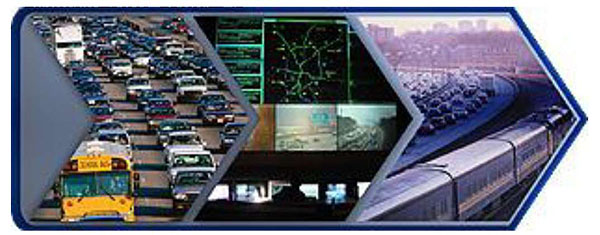
(Extended Text Description: This graphic is a collection of three photos, each in the shape of the head of an arrow. The three photos are joined together to form a larger arrow. Starting on the left, the first image is of a traffic jam on a highway. The next image to the right of the first image is of a transportation control room. It shows a large screen with maps of major roadways and live camera images in the control center. To the right of this image is an image of a train traveling next to a highway full of cars and trucks.)
Source: USDOT ICM Web site:
https://www.its.dot.gov/research_archives/icms/index.htm
Author Notes for Slide 23:
This section of the module discusses institutional issues related to standards and open source transportation data. As transportation agencies continue to deploy ITS infrastructure and collect transportation data, the need for data sharing and public dissemination is becoming more significant. In addition, various private sector entities have begun providing transportation data. USDOT’s Integrated Corridor Management (ICM) initiative highlights the need for data sharing across modes and jurisdictions.
The topics covered in this section include institutional issues related to ITS data: standards, licensing, access, and users.
Slide 24: Standards and Open Source
- The USDOT ITS Standards Program is leading the development of ITS standards
- A current challenge across many transportation agencies in the U.S. is that data are captured and stored as a single source from a single mode
- Most datasets are collected and stored independent of other data sources (e.g., freeway loop data stored independently of periodic “floating car” travel time runs)
Author Notes for Slide 24:
Both ITS cooperative and ITS infrastructure standards are typically developed by Standards Development Organizations (SDOs) with oversight by USDOT. These standards are consensus-based, open, and voluntary. The SDOs function as public-private partnerships with USDOT.
Slide 25: Standards and Open Source
Licensing
- Describes who can use a given dataset and how that dataset can be used
- Clearly and articulately answers questions regarding ownership and intellectual property (IP) of the data
- E.g., some licensing agreements with private providers of traffic data do not allow agencies to post the traffic data to their Web site or to their dynamic message signs for public dissemination
Author Notes for Slide 25:
Real-World Example: An example of a licensing agreement that affected the end use of data is FHWA’s Transportation Technology Innovation and Demonstration (TTID) Program, which funded a program to collect travel times in various locations around the United States. The initial agreement of this effort defined that the vendor had ownership of all data collected through the effort and not FHWA. Because of this agreement, FHWA’s ability to reuse the data was limited.
Slide 26: Standards and Open Source
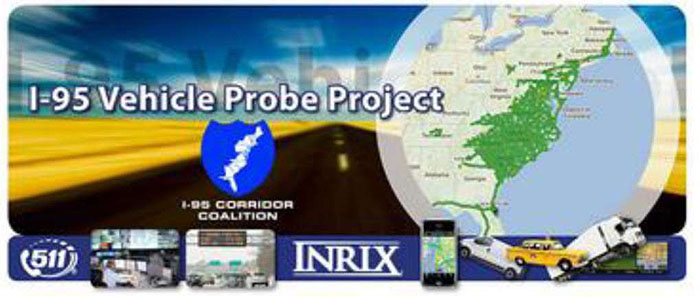
(Extended Text Description: This graphic is the web image used on the I-95 Vehicle probe project website. It consists of a computer generated image of a straight road the runs to the horizon surrounded by a golden field and blue sky. On the right side of the image in a large, translucent white circle is a map of the eastern United States with large areas of green highlighting I-95 in the northeast US, and the entire states of Maryland, Virginia, North Carolina and South Carolina. Areas of Georgia and Florida are also highlighted in green. In a row at the bottom of the entire graphic are smaller images. From the left, the first image is a blue rectangle. Inside the rectangle written in white are the numbers “511” that is surrounded by circle made from a graphic of a telephone and cord. To the right of that image is a rectangular photo of a man at the helm of a transportation control center. To the right of that image is a rectangular photo of an installed overhead transportation digital message board with traffic flowing underneath. To the right of that photo is a longer blue rectangle with the logo for “INRIX” in white font. To the right of the logo is an image of a smartphone with a live traffic map on the screen. To the right of that image are three vehicles, followed by a computer monitor.)
Source: I-95 Corridor Coalition
Real-World Example: The I-95 Corridor Coalition’s Vehicle Probe project was a collaborative effort among the I-95 Corridor Coalition, the University of Maryland, and INRIX. The Coalition’s RFP clearly stated rules for data ownership and licensing, guaranteeing that the Coalition would have full right of data ownership and use. In addition, the Coalition had a Memorandum of Understanding with the University of Maryland stating that the Coalition would have the right to use all traffic data procured by the University for the project for its own purposes as well as public dissemination.
Slide 27: Standards and Open Source
Access
- To make the best use of ITS data, it is desirable to allow practitioners access to the data
- However, who should be able to access the data, and what data should be available to each stakeholder?
- Providing access to real-time data versus archived data
- Quality assurance
- Aggregate vs. disaggregate datasets
Author Notes for Slide 27:
Quality assurance - There can be concerns about allowing access to real-time data prior to having the opportunity to perform quality assurance on the data
Aggregate vs. disaggregate datasets - While many state DOTs offer real-time, aggregate datasets (e.g., speed data collected through loop detectors) for public dissemination to make informed route choice decisions, few offer access to disaggregate and real-time datasets
Slide 28: Standards and Open Source
Users
- Traditionally, the majority of the users of ITS data have been the transportation organizations collecting the data
- For example, an agency collecting speeds or travel times uses this information to better plan future infrastructure improvements
- Data sharing with other transportation agencies can be used to further leverage and improve transportation operation at a wider scale
- For example, sharing real-time traffic signal timing can assist agencies in collaborating and optimizing signals on a corridor that traverses both jurisdictions.
Slide 29: Operating and Maintaining ITS
Funding Operating and Maintenance Costs
- O&M costs can pose many challenges
- O&M costs often overlooked
- O&M costs can be difficult to obtain relative to deployment funds
- ITS projects typically incur a greater proportion of their costs in the years after deployment to operate and maintain the system as compared to more traditional transportation improvements
Author Notes for Slide 29:
O&M costs often overlooked - although O&M costs are a critical component of the total costs of any technology project, these costs are often an overlooked aspect of deploying ITS.
O&M costs can be difficult to obtain relative to deployment funds - deployment funds are often achieved using Federal funds, while state/local funds must be used for O&M costs, so it can be more difficult to obtain funds for O&M.
Slide 30: Operating and Maintaining ITS
Information Technology Challenges
- Responsibility for selection, set up, and operation of computer and communication equipment for an ITS project often falls to Information Technology (IT) staff rather than to the division deploying or operating the system
- IT staff do not always recognize that they should be providing a “customer service”
Author Notes for Slide 30:
Often falls to IT because it is considered to be a “data processing” function rather than an engineering function.
Slide 31: Operating and Maintaining ITS
Establishing Roles and Responsibilities for System Ownership
- System ownership post-deployment is often an overlooked aspect of ITS deployment
- Considerations:
- Establish roles and responsibilities for maintenance activities at the outset of the project, and involve those who will be responsible during the design process
- Establish a well-defined process for monitoring and maintaining field equipment before beginning
Author Notes for Slide 31:
Real-World Example: In the iFlorida Model Deployment, responsibilities for equipment maintenance were not established up front. The district leading the effort anticipated that the districts in which the Statewide Monitoring System equipment was located would take over responsibility for maintaining the equipment upon completion of the project. However, only districts that had an active ITS program were willing to take over this responsibility. At the time, some districts had little or no ITS equipment deployed and no staff or maintenance contracts for maintaining ITS equipment. Additionally, they had not been involved in the design of the system and therefore had not had the opportunity to verify that the new equipment was compatible with any existing equipment. If formal maintenance procedures are not established up front, in most cases the system will end up being maintained either by the agency that led the deployment, or by the agency that interacts most frequently with the system.
Slide 32: Interjurisdictional Cooperation
- To foster stakeholder cooperation:
- Develop a coalition of involved organizations
- The more these participating organizations cooperate, communicate, share ideas and information, and solve problems together, the greater the success for ITS integration
- Enlist civic leaders, lobbyists, and advocates to help bridge institutional gaps
- They can educate and inform others, promote ITS programs in their region, seek funding, and help obtain additional resources
Author Notes for Slide 32:
Many ITS projects require the involvement of multiple agencies, and for these efforts, institutional integration is key to success. It can be difficult to bring agencies and other stakeholders together, and it can be even more difficult to sustain these relationships over of the life of the project, from deployment to operation. This section of the module discusses strategies that can aid with inter-jurisdictional cooperation including clear establishment of roles and responsibilities for deployment, operations, and maintenance.
Civic leaders, lobbyists, and advocates can help bridge institutional gaps - e.g., a county commissioner, a congressman, an MPO director, or a local resident who is a nationally recognized expert.
Slide 33: Inter-Jurisdictional Cooperation
- Keep the group connected
- Regular information sharing with the broad stakeholder group is critical as it helps maintain an atmosphere of cooperation and agreement
- Establish roles and responsibilities for all partners early in the process
- Clearly define roles and responsibilities for the deployment, as well as for operations and maintenance of the system post-deployment
Author Notes for Slide 33:
Keep the group connected - Regular information sharing with the broad stakeholder group is critical as it helps maintain an atmosphere of cooperation and agreement. Those actively involved in the process must keep those less involved informed. It is critical to cultivate understanding and interest in ITS at all levels of the participating agencies early in ITS development. Operations staff need to understand how coordination of systems and information flows can improve their operational responsibilities, and planning staff need to understand their role in ITS planning and the roles and the responsibilities of operations staff. Establishing these working relationships can not only facilitate successful day-to-day operations, but also help form a foundation from which to develop future ITS initiatives.
Establish roles and responsibilities for all partners early in the process - It is critical to clearly define roles and responsibilities for the deployment, as well as for operations and maintenance of the system post-deployment.
Slide 34: Inter-Jurisdictional Cooperation
- Think regionally
- Successful past deployments can be the best way to convince decision-makers of the benefits of participating in the ITS development process
Real-World Example: The EZPass program in the northeast gave solid evidence to decision-makers and the public throughout the region of the advantages of both ITS and interagency coordination. While each participating agency to the EZPass system was primarily motivated by their own operational needs and concerns, bringing these organizations together early on in the process, and establishing new relationships cultivated a greater interest in regional transportation issues and regional ITS solutions.
Author Notes for Slide 34:
Think regionally - Successful deployments can be the best way to convince decision-makers of the benefits of participating in the ITS development process. The EZPass program in the northeast gave solid evidence to decision-makers and the public throughout the region of the advantages of both ITS and interagency coordination. While each participating agency to the EZPass system was primarily motivated by their own operational needs and concerns, bringing these organizations together early on in the process, and establishing new relationships cultivated a greater interest in regional transportation issues and regional ITS solutions.
Slide 35: Workforce Issues
A variety of challenges face the transportation industry when it comes to the workforce, including an aging workforce, competition for skilled workers, retention, and changing needs
An Increasingly Competitive Workforce
- Impending retirement of the baby boomer generation
- Fewer people entering transportation-related fields
- Increasing competition with other industries for workers
University of Minnesota’s Video Promoting Careers in ITS

Author Notes for Slide 35:
Transportation organizations face a multitude of challenges when it comes to having staff with the necessary skill sets to effectively manage ITS projects. This section of the module discusses workforce issues when it comes to planning, deploying, and maintaining ITS, including both staffing requirements for overseeing the work of consultants and contractors, as well as staffing requirements for conducting work in house. It discusses common challenges that many agencies face related to the new skill sets required of their staff to effectively manage ITS projects in an ever-changing environment, and discusses associated professional capacity building and workforce development considerations. Finally, it provides available resources for workforce development and training.
Source: Video developed by the ITS Institute, University of Minnesota and used with permission. 2011 Regents of the University of Minnesota. All rights reserved.
NOTE: Video is 10 minutes in length
Slide 36: Workforce Issues
Workforce Retention
Many sectors of the transportation industry face significant attrition challenges, as employees choose to switch positions within a company or mode, or to leave the transportation field entirely
“The loss of these highly skilled personnel is likely to result in significant loss of specialized knowledge and historical perspective critical to the efficient operation of transportation organizations.”
- NCHRP Report 693
“Nearly 50 percent of engineering graduates leave the engineering fields at some point in their career.”
- Patrick Natale, American Society of Civil Engineers (ASCE)
Slide 37: Workforce Issues
Changing Skill Sets Required of the ITS Workforce
The needs of the workforce are now requiring skills that go far beyond traditional engineering disciplines
- Solutions include:
- Implementing workforce development strategies:
- Creating a collaborative culture of cross-generational mentoring
- Increasing technical training and creating opportunities for ongoing professional capacity building
- Examining retirement projections and implementing succession planning
Author Notes for Slide 37:
At the same time that the industry faces challenges in staffing the workforce, the needs of the workforce are changing, requiring skills that go far beyond traditional engineering disciplines.
Slide 38: Workforce Issues
- Outsourcing (i.e., using external providers to manage or maintain certain aspects of the business)
- Can be total privatization of the deployment, management, and operation of a system
- Can be simply supplementing staff to cover specific needs
Author Notes for Slide 38:
Outsourcing is the process by which organizations use external providers to manage or maintain certain aspects of their businesses when agency resources or skills are insufficient. Outsourcing can range from total privatization of the deployment, management, and operation of a system, to simply supplementing staff to cover specific needs.
Items to consider when outsourcing:
- Design a Request for Proposal (RFP) that is both complete and specific;
- Specify a structure for the bidder’s pricing or rates;
- Determine the criteria for selection;
- Consider the impact of the length of the contract; and
- Recognize that the type of contract affects the level of risk sharing.
Slide 39: Workforce Issues
Professional Capacity Building and Workforce Development Resources
- The USDOT’s ITS Joint Program Office (JPO) Professional Capacity Building (PCB) Program Standards Training
- The USDOT’s ITS Joint Program Office (JPO) Professional Capacity Building (PCB) Program Other Training
- The Institute of Transportation Engineers (ITE)
- The American Public Transportation Association (APTA)
- The Transportation Research Board (TRB)
- The National Highway Institute (NHI) and National Transit Institute (NTI)
- The FHWA Resource Center
- The Consortium for ITS Training and Education (CITE) State and Regional Resources
Author Notes for Slide 39:
A number of training resources are available to practitioners, as shown on this slide.
Slide 40: Summary
The institutional issues encountered in deploying and maintaining ITS technologies are often as complex and challenging as the technological issues
As ITS technologies continue to evolve, so will institutional issues and challenges.
The continued leadership from the USDOT in the development of standards, open source data polices, and data environments, will be critical in facilitating efficient collection and sharing of data, while ensuring data privacy. Workforce development will be a key focus in coming years, supported by resources available from USDOT.
Slide 41: References
- Deakin, Elizabeth, Mainstreaming Intelligent Transportation Systems, University of California Transportation Center Report No. 791 (Berkeley, CA: September 2006).
- U.S. Department of Transportation, Research and Innovative Technology Administration, “Policy Road Map for IntelliDrive Safety: Vehicle-to-Vehicle (V2V) and Vehicle-to-Infrastructure (V2I),” Draft, May 19, 2010.
- Financial Analysis of Transportation-Related Public Private Partnerships, USDOT Office of Inspector General, July 28, 2011.
- Perlman, Mark and Julia Pulidindi, “Public-Private Partnerships for Transportation Projects,” National League of Cities Municipal Action Guide (2012).
- Federal Transit Administration, “Moving Ahead for Progress in the 21st Century Act (MAP-21): A Summary of Public Transportation Provisions.”
- U.S. Department of Transportation, MAP-21 Congestion Mitigation and Air Quality Improvement (CMAQ) Program website.
- U.S. Department of Transportation, MAP-21 Surface Transportation Program (STP) website.
Slide 42: References (cont'd)
- ITS America, http://connectedvehicle.itsa.wikispaces.net/file/view/ITSAFairInformatioPrivacy.pdf (content no longer available) “Fair Information and Privacy Principles,” January 11, 2001.
- Jacobson, Leslie, on behalf of the Institutional Issues Subcommittee of the National VII Coalition, “Vehicle Infrastructure Integration Privacy Policies Framework,” Version 1.0.2, February 16, 2007.
- U.S. Department of Transportation, Research and Innovative Technology Administration, “Policy Road Map for IntelliDrive Safety: Vehicle-to-Vehicle (V2V) and Vehicle-to-Infrastructure (V2I),” Draft, May 19, 2010.
- The White House, “Consumer Data Privacy in a Networked World: A Framework for Protecting Privacy and Promoting Innovation in the Global Digital Economy,” February 2012.
- Sill, Steve, et al., “Intelligent Transportation Systems (ITS) Standards Program Strategic Plan for 2011—2014,” U.S. Department of Transportation, 2011.
- I-95 Corridor Coalition’s Project Database, Vehicle Probe Project.
- Florida Department of Transportation, http://www.dot.state.fl.us/trafficoperations/doc_library/PDF/ITS_Integration_Guidebook.pdf (content no longer available) Florida’s ITS Integration Handbook, October 1, 2002.
- U.S. Department of Transportation and Council of University Transportation Centers, http://cutc.tamu.edu/pdf/Workforce_Overview_National_TWFD_Strategy_03_12_10.pdf (content no longer available) National Transportation Workforce Development Strategy: A Roadmap to the Future, March 2010.
Slide 43: Questions?
- What are some of the most common kinds of institutional challenges that agencies can encounter in planning, deploying, and maintaining ITS technologies?
- What are successful methods that can be used to address these challenges?
- Where can an agency find more information to addressing these institutional challenges?
Author Notes for Slide 43:
- What are some of the most common kinds of institutional challenges that agencies can encounter in planning, deploying, and maintaining ITS technologies?
- Making the Business Case for ITS
- Organizational Capabilities for ITS
- Funding/Financing ITS
- Data Privacy Issues
- Standards and Open Source
- Operating and Maintaining ITS
- Inter-Jurisdictional Cooperation
- Workforce Issues
- What are successful methods that can be used to address these challenges? [Many correct answers, depending on the institutional issue they focus on.]
- Where can an agency find more information to addressing these institutional challenges?
- There are many USDOT resources on lessons learned, costs and benefits of ITS, etc.
- Other agencies can be a good resource
- There are a number of training resources available, both online and in person
Return to top ↑